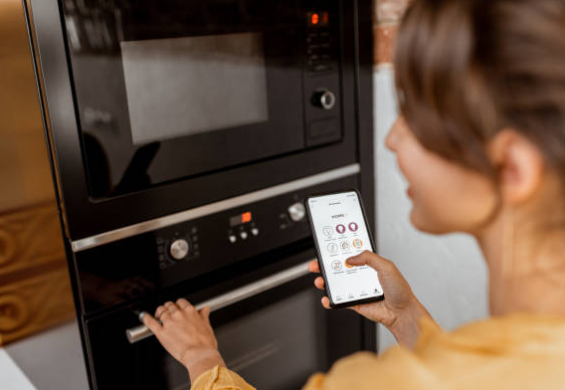The Importance of an Oven Thermostat
An oven thermostat is a crucial component of any oven. It is responsible for regulating and maintaining the desired temperature inside the oven, ensuring that your food is cooked evenly and to perfection. Without a properly functioning thermostat, your oven may not heat up to the desired temperature or may fluctuate throughout the cooking process, resulting in undercooked or overcooked meals.
How Does an Oven Thermostat Work?
An oven thermostat works by using a temperature-sensing element, such as a bulb or a capillary tube filled with a temperature-sensitive liquid, to measure the temperature inside the oven. This information is then sent to the thermostat control, which determines whether the oven needs to heat up or cool down to maintain the desired temperature. Once the desired temperature is reached, the thermostat signals the heating element to turn off, preventing the oven from overheating.
Common Issues with Oven Thermostats
While oven thermostats are designed to be durable and reliable, they can occasionally develop issues over time. Some common problems include:
- Inaccurate Temperature Readings: If your oven's thermostat is not calibrated correctly, it may display inaccurate temperature readings, leading to inconsistent cooking results.
- Temperature Fluctuations: A faulty thermostat can cause temperature fluctuations, resulting in uneven cooking or baking.
- Failure to Heat Up: If your oven fails to heat up at all, it could be due to a malfunctioning thermostat.
How to Test an Oven Thermostat
If you suspect that your oven thermostat is not functioning properly, you can perform a simple test to check its accuracy. Here's how:
- Preheat your oven to a specific temperature, such as 350°F.
- Using an oven thermometer, place it inside the oven and close the door.
- Wait for the oven to reach the desired temperature and check the thermometer's reading.
- If the thermometer reading matches the set temperature, your thermostat is accurate. If not, it may need to be recalibrated or replaced.
Replacing an Oven Thermostat
If you've determined that your oven thermostat needs to be replaced, it's essential to follow the manufacturer's instructions or consult a professional. Here are some general steps to replace an oven thermostat:
- Disconnect the power supply to the oven.
- Locate the thermostat, which is usually located behind the control panel or in the oven cavity.
- Remove any screws or mounting brackets holding the thermostat in place.
- Disconnect the wires connected to the thermostat.
- Install the new thermostat by reversing the removal steps.
- Reconnect the power supply and test the oven to ensure the new thermostat is functioning correctly.
Maintaining Your Oven Thermostat
To prolong the lifespan of your oven thermostat and ensure its optimal performance, it's important to maintain it properly. Here are a few tips:
- Regular Cleaning: Clean the control panel and thermostat area regularly to prevent dust and debris from affecting its accuracy.
- Calibration: If you notice temperature inconsistencies, consider calibrating the thermostat or seeking professional assistance.
- Professional Maintenance: Schedule regular maintenance checks with a professional technician to identify and address any potential issues before they become major problems.
Conclusion
An oven thermostat plays a critical role in ensuring that your oven cooks your meals to perfection. Understanding how it works, testing its accuracy, and knowing how to replace or maintain it will help you avoid cooking mishaps and enjoy delicious meals every time.

